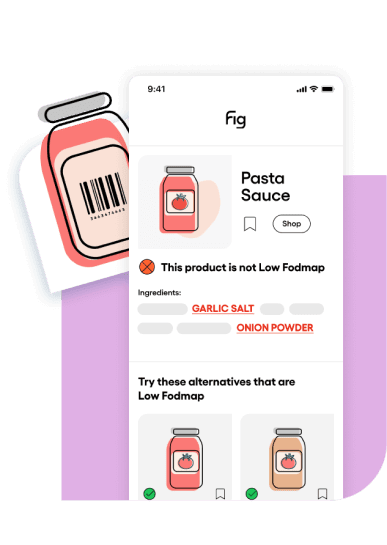


Find foods you can eat.
Alcohol on the Low FODMAP Diet
Published on March 18, 2021Introduction to Alcohol on the Low FODMAP Diet
It seems like every social event or gathering revolves around the same two things: food and drinks. Whether it is a work happy hour, a family dinner, a birthday party, or another celebration, alcohol is often at the center of it. We know that balancing a social life while trying to strictly adhere to the elimination phase of the low FODMAP diet can be a challenge. But how does alcohol fit into the equation? Or does it fit into the low FODMAP diet? Let’s break this down!
Alcohol and FODMAPs
Thankfully, some alcoholic beverages are low FODMAP, but not all alcohol has been tested for FODMAP content. Some alcohol has also tested high for FODMAPs. As with a lot of food and beverages on the low FODMAP diet, portion size plays a role here, so moderation is key.
It is also important to note that moderation is always recommended with alcohol consumption, regardless of FODMAP content. Excess alcohol can trigger GI symptoms for anyone, with or without an IBS diagnosis, as it is a known gut irritant. It is important to test your individual tolerance to alcohol, as what works for one person may not work for the next. Everyone’s GI tract is different!
Use the list below as a guide for which alcoholic beverages are low FODMAP at specific portion sizes. Find the full list of high and low FODMAP alcohols on the Fig app.
| Alcohol | FODMAP Guidelines |
|---|---|
| Beer | 1 can/375 mL is low FODMAP |
| Gin | 30 mL is low FODMAP |
| Rum | Rum is NOT low FODMAP and should be avoided during the elimination phase |
| Vodka | 30 mL is low FODMAP |
| Whiskey | 30 mL is low FODMAP |
| Red wine | 1 glass/150 mL is low FODMAP |
| Sparkling wine | 1 glass/150mL is low FODMAP |
| Sticky wine | Sticky wine is NOT low FODMAP and should be avoided during the elimination phase |
| Sweet wine | 1 glass/150mL is low FODMAP |
| Tequila | 1 shot glass/30g is low FODMAP |
| White wine | 1 glass/150mL is low FODMAP |
| Dry white wine | 1 glass/150mL is low FODMAP |
Alcohol that has not been tested for FODMAPs
Not all alcoholic beverages have been tested for FODMAP content, so during the elimination phase of the diet, it is best to avoid these beverages. However as you get into the reintroduction and maintenance phases of the diet, you can test your individual tolerance by starting with a small portion and increasing as tolerated. Some popular beverages that have not been tested for FODMAPs include: hard seltzers and cider.
How to Safely Enjoy Alcohol on the FODMAP diet
As mentioned above, practicing moderation with alcohol is key to minimizing symptoms while on a low FODMAP diet. In addition, consider these tips and tricks:
- Monitor your symptoms. It is important to monitor your symptoms when drinking alcohol and make note of any changes that occur. Keep a food and symptom journal to track this and identify any triggers! This is especially helpful when trying alcohol that has not been tested for FODMAP content.
- Stay hydrated. For every alcoholic beverage you consume, drink at least 1 glass of water. This will help you stay hydrated, as alcohol can be dehydrating.
- Choose safe mixers. Sometimes the alcohol is low FODMAP, but the mixer used to create the cocktail is not. High FODMAP juices or sodas can trigger symptoms. Try low FODMAP mixers such as seltzer, lime juice, lemon juice, or pure cranberry juice.
- Don’t drink on an empty stomach. Have some food in your system when you are drinking or pair your alcohol with a low FODMAP meal. This will slow down the emptying effect that alcohol can have on the GI tract.
In Summary
Alcohol can be enjoyed on a Low FODMAP diet! Just note that alcohol may not be tolerated by everyone, regardless of FODMAP content, since it is a known gut irritant. If you do choose to consume alcohol, moderation is key, always test your tolerance, and monitor your symptoms during and after. Cheers!
Let Fig guide you on your FODMAP journey

Fig’s phone app automatically checks if groceries are likely Low FODMAP.
Photo by Zan on Unsplash
 Understanding Low FODMAP serving sizes
Understanding Low FODMAP serving sizes How to Make a Low FODMAP Pizza
How to Make a Low FODMAP Pizza